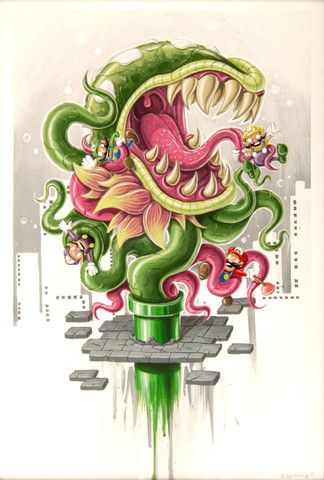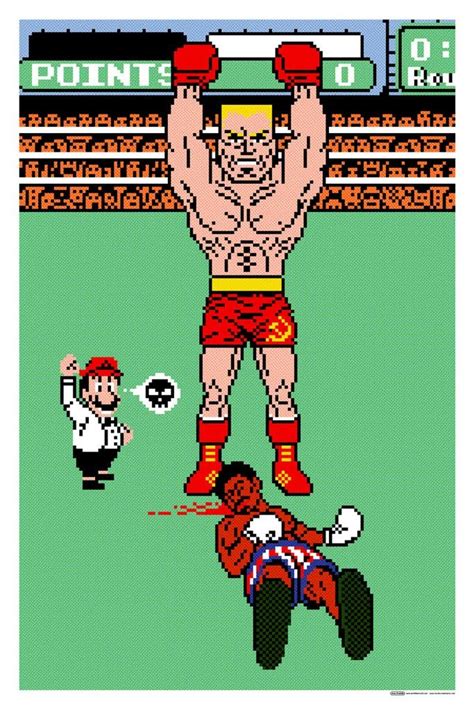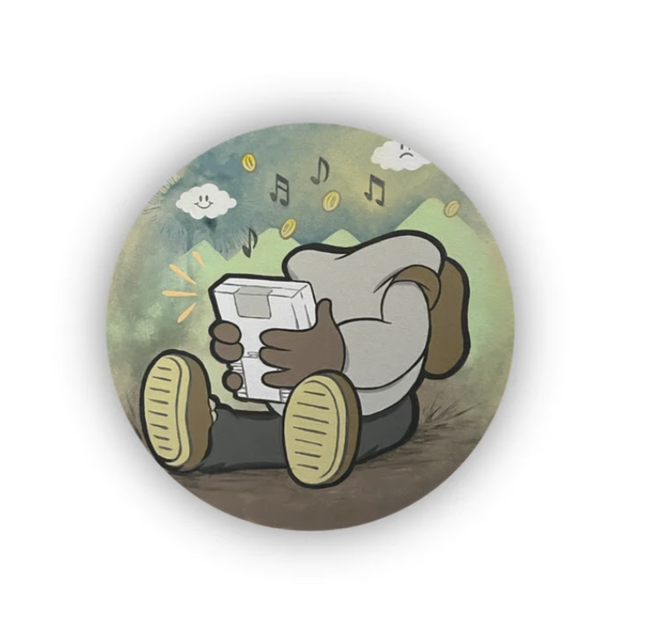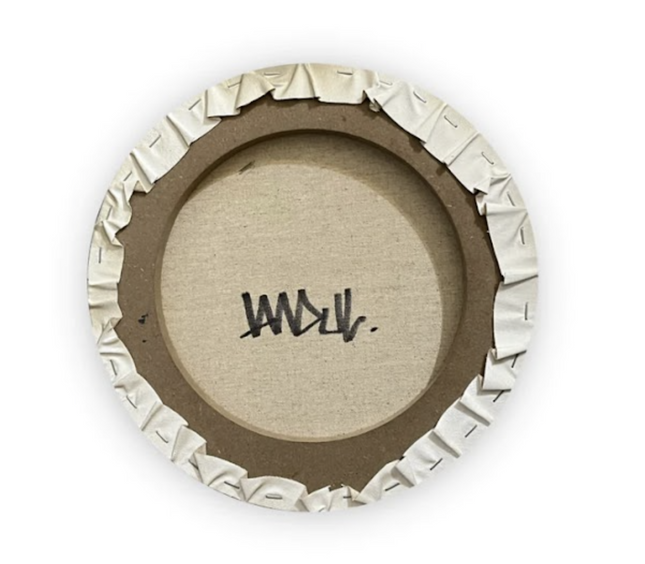
Nintendo NES & Game Boy

Brandon Sopinsky Little Shop of Plumbers Giclee Print by Brandon Sopinsky
Little Shop of Plumbers Artwork Giclee Limited Edition Print on Fine Art Paper by Pop Culture Graffiti Artist Brandon Sopinsky.
$129.00

Jon Smith You Vil Lose Silkscreen Print by Jon Smith
You Vil Lose Limited Edition 4-Color Hand-Pulled Silkscreen Print on Fine Art Paper by Jon Smith Graffiti Street Artist Modern Pop Art.
$194.00


Vandul Gameboi Vandul Original Acrylic Painting by Vandul
Gameboi Vandul Original Acrylic Painting by Vandul One of a Kind Artwork on Round Stretched Canvas by Street Art Pop Artist. 2022 Signed Original Round Acrylic Original Painting Size 12x12 The Artistic Essence of Vandul's "Gameboi Vandul" in Street Pop Art Culture In the vibrant landscape of street pop art, few pieces capture the playful spirit and reflective nostalgia quite like "Gameboi Vandul," an original acrylic painting by the street artist known simply as Vandul. This one-of-a-kind artwork, created in 2022, is a signed original that brings graffiti art's aesthetic and pop culture sensibilities into a harmonious visual experience. Presented on a 12x12 inch round stretched canvas, Vandul's piece is a compact yet powerful expression of street art's influence on modern pop artistry. "Gameboi Vandul" is not just a painting; it's a cultural statement that blends the vintage charm of handheld gaming with the raw edge of street art. The artwork depicts a character engrossed in a game, surrounded by a serene outdoor scene that contrasts with the urban grittiness often associated with graffiti. The choice of a round canvas breaks traditional boundaries, just as street pop art breaks conventional artistic norms. The circular shape adds a dynamic element, guiding the eye inward to the focal point — the character and his gaming device — and reflecting the immersive nature of both art and play. Vandul's Creative Process and Impact on Street Art Vandul's creative process involves a deep understanding of the cultural icons that resonate across generations. "Gameboi Vandul" takes a widely recognized emblem of youth and technology — the Gameboy — and reimagines it through the lens of street pop art. The artist's use of acrylic paints gives the piece a brightness and depth often seen in graffiti artwork, with bold lines and solid colors that pop against the canvas. Vandul's work is known for its ability to evoke a sense of nostalgia while commenting on the present, and this piece is no exception. His commitment to authenticity and originality underscores the impact of Vandul's work on the street art scene. His pieces often feature characters that are both a reflection of himself and the broader human experience. In "Gameboi Vandul," the character's engrossment in the game serves as a metaphor for the escapism in art and gaming. The artwork resonates with viewers who find solace in life's simple pleasures, suggesting a universal connection that street pop art and graffiti artwork excel in portraying. Collectibility and Significance of "Gameboi Vandul" As a collectible, "Gameboi Vandul" is significant in street pop art. Vandul's decision to release the painting as a limited signed original adds to its exclusivity and appeal as a collector's item. The artwork symbolizes the fusion between contemporary street art and pop culture, making it desirable for fans of both genres. Vandul's work, with its distinctive style and thoughtful composition, continues to contribute to the narrative of street pop art as a form of valuable and impactful artistic expression. In an art market where street pop art and graffiti artwork are gaining increasing recognition and value, Vandul's "Gameboi Vandul" stands out as a testament to the enduring allure of street-inspired creations. The painting's presence in the art community serves as a reminder of the expressive power of visual art, the importance of preserving cultural memories, and the unifying aspects of shared experiences, be it through gaming or the appreciation of art. In the more excellent discourse of street pop art, Vandul's "Gameboi Vandul" is a compelling illustration of how artists can bridge the gap between street culture and the refined space of galleries. The artwork captures the playful essence of street art, the connectivity of pop culture, and the artist's personal touch, making it a vibrant addition to the contemporary art scene. Vandul's work exemplifies the potential of street pop art to transcend its origins, creating a dialogue that stretches across time, culture, and the very definition of art itself.
$539.00

Nick Derington Boss Fight The Legendary Glow Silkscreen Print by Nick Derington
Boss Fight- Glow In The Dark- The Legendary Limited Edition 1-Color Hand-Pulled Silkscreen Print on Fine Art Paper by Nick Derington Graffiti Street Artist Modern Pop Art.
$156.00






